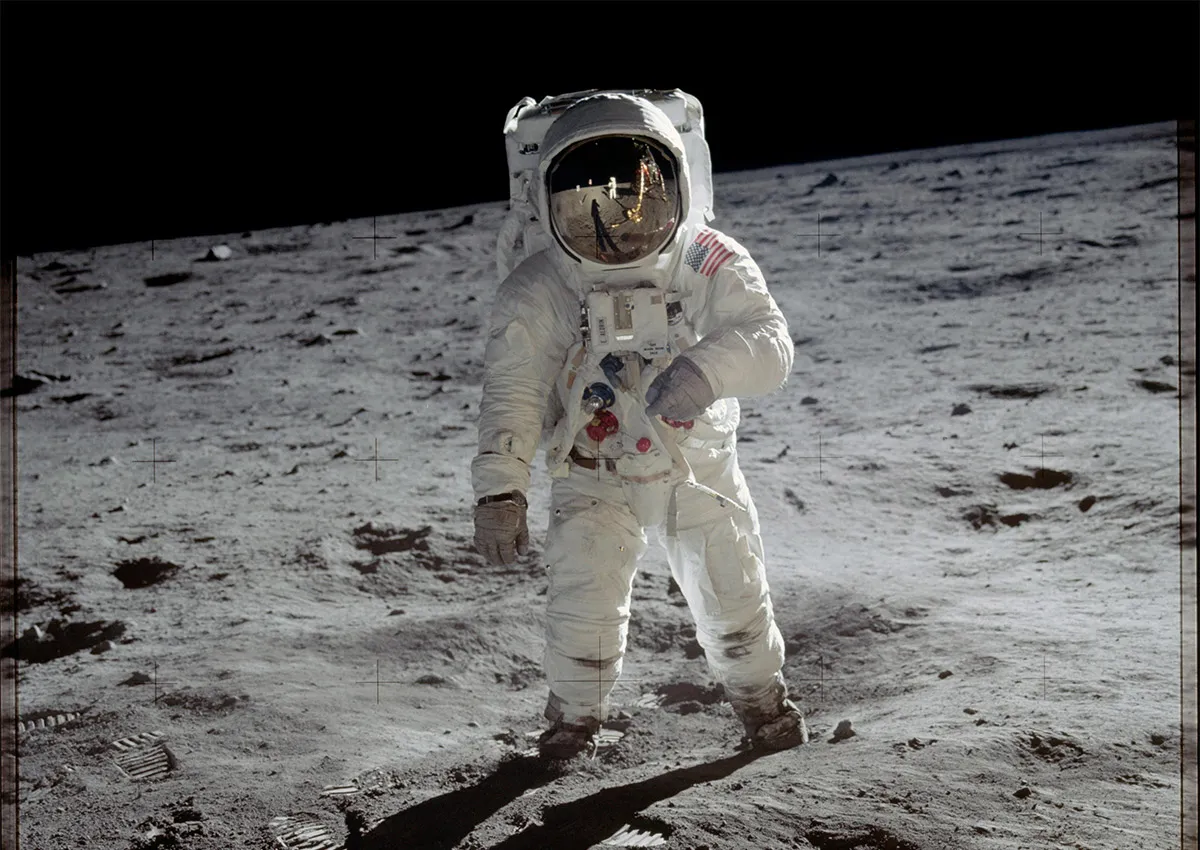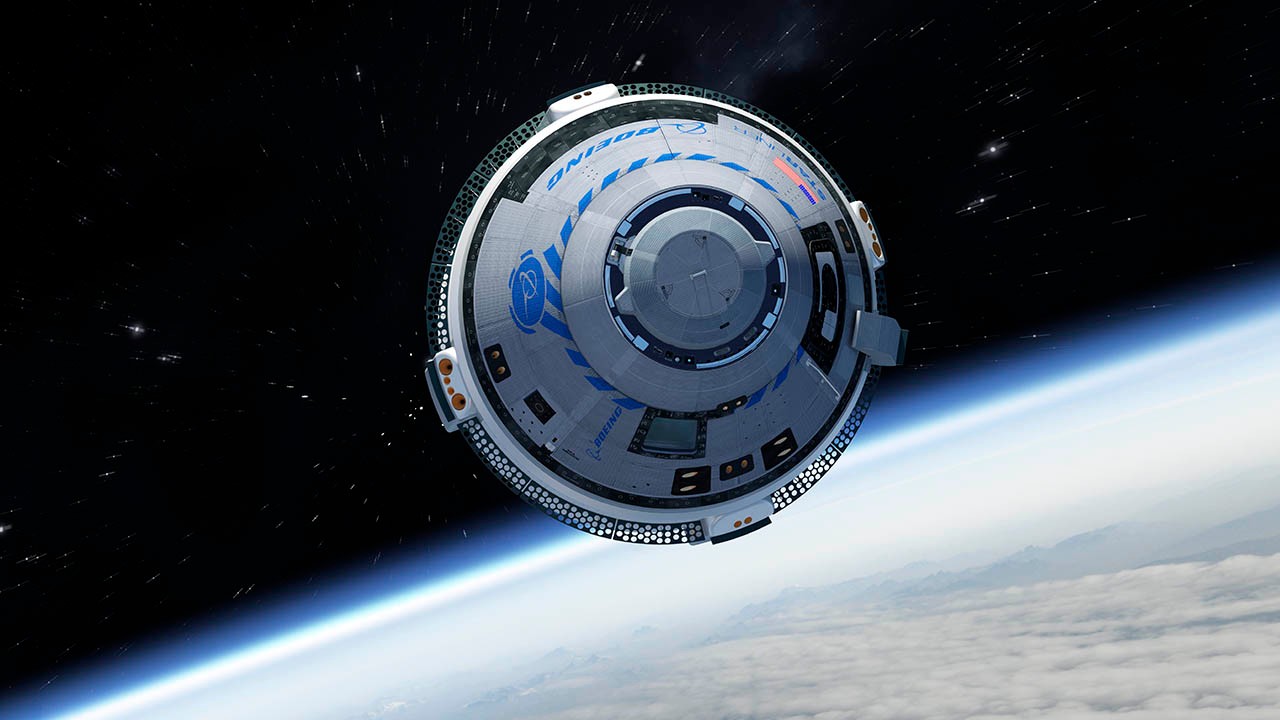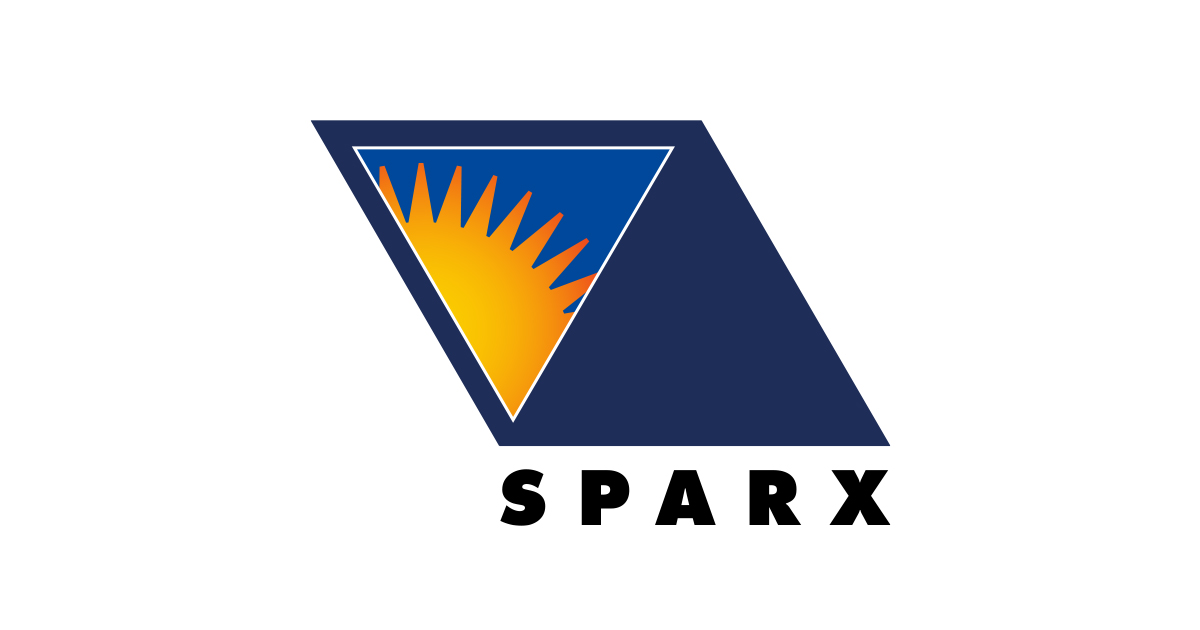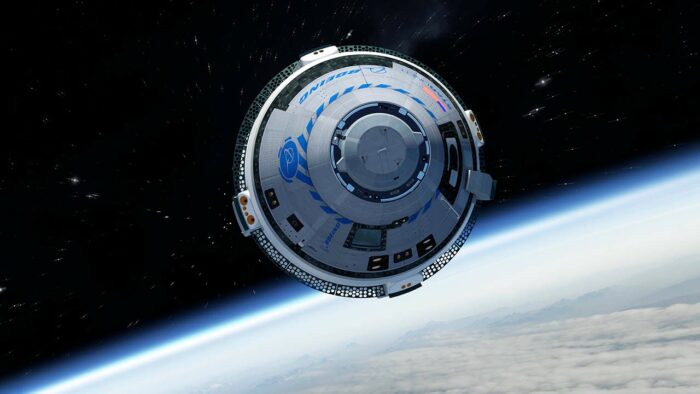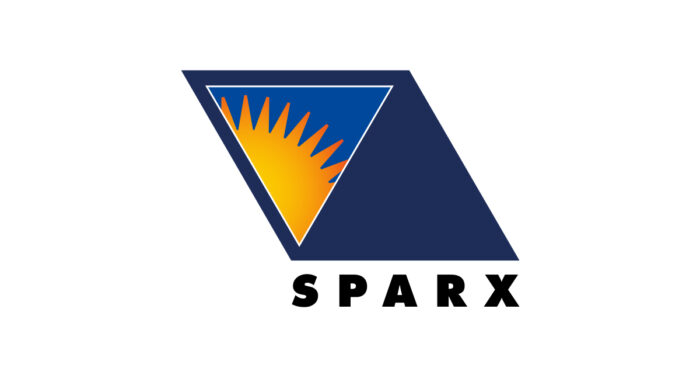by Julia Seibert
At first glance, space exploration seems like a giant’s game. Born out of Cold War power politics, the endeavor has historically been molded by the world’s mightiest nations showing their adversaries who’s boss. Today, a second glance shows a more intricate picture; as of 2023, There are 77 countries with space programs across the world, including those of heavyweights such as the US and China as well as newcomers like Vietnam and Bolivia. Still, only 16 space agencies boast launch capabilities of their own, and only three have managed to send humans to space. Will the recent onslaught of fledgling space programs change the demographic landscape of space – or will survival of the biggest remain written in the stars?
Major Countries with Space Programs
USA
The US sports, quite undisputedly, the most accomplished space program in the world. Founded in 1958, its National Aeronautics and Space Administration – NASA – has sent humans to the moon and probes to planets and interstellar space, while simultaneously building up a sophisticated fleet of Earth observation satellites that monitor everything from climate change to geology to oceanography. NASA’s countless achievements – which also include several orbital telescopes and playing a major part in the development and operation of the International Space Station (ISS) – have cemented its place as one of the world’s most prolific scientific institutions.
Still, it is not without its problems. As a governmental agency whose budget is already being surpassed by that of the US Space Force – which focuses solely on the military aspects of space – NASA must juggle politics, PR, and science in a delicate balancing act. This has, at times, led to tragedy. Space Shuttle Challenger, for example, lifted off in January 1986 while engineers’ concerns regarding the components that ultimately resulted in the vehicle’s explosion were ignored due to the immense publicity of the mission. Political pressure, which in turn is influenced by the demands of veteran contractors like Boeing, has also resulted in an exorbitantly expensive and delayed moon rocket. This vehicle – the ginormous Space Launch System, or SLS – is NASA’s only orbital rocket, with the agency mostly relying on the more able private sector (primarily SpaceX) for launches.
NASA’s lunar program Artemis, which involves landing humans on the moon and eventually building a base there, is among the agency’s most ambitious projects. It also serves as a political tool. NASA’s knack for establishing or furthering international collaboration is well-documented with projects such as the ISS and various space probes. Artemis takes this one step further by means of the Artemis Accords: a nonbinding set of agreements that lay out exploration of the moon and beyond as envisioned by the US. So far, over thirty countries have signed on, strengthening the Accords’ authority despite their nonbinding nature.
China
Despite taking a back seat during the original space race of the 1960s, China’s proficiency in space has risen meteorically in the last two decades or so, and its space program is thriving. The country sent its first taikonaut into space ten years after founding its agency – China National Space Administration, or CNSA – in 1993 (though China’s space activities date back to the 1950s). CNSA’s executive counterpart is China Aerospace Science and Technology Corporation (CASC), a state-owned enterprise that, among other things, is a major contractor and operator for China’s workhorse Long March rocket family and the human-rated Shenzhou spacecraft. Its recent successes include landing several probes on the moon – which pulled off the first soft landing on the far side as well as a sample return – landing a rover on Mars, and establishing a crewed space station in Earth’s orbit. By some estimates, China is developing these capabilities at twice the rate of the US.
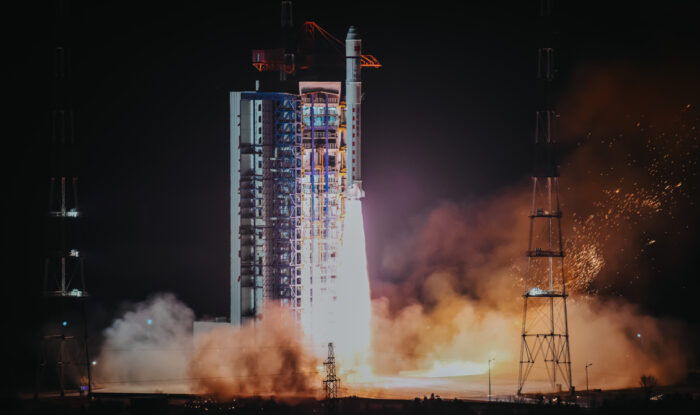
Though the US had launched plenty a satellite atop the Long March series in the past, a 1998 US congressional report stated that American commercial technology had ended up in Chinese missiles, effectively ending most cosmic collaboration between the two nations (Congress’s 2011 Wolf Amendment further cemented this embargo). However, this seemed to spur rather than halt China’s developments, with the US now out of the loop.
Like the US’s efforts, China also uses its space program as a soft-power tool. This has been especially pronounced in Africa, where China has supported several nations, including Nigeria and Ethiopia, with space-related projects like ground stations, satellites, and, on occasion, satellite launch. A Chinese spaceport in Djibouti is also planned. Beyond the terrestrial, China, like the US, hopes to achieve a crewed landing by the end of the decade, eventually establishing the International Lunar Research Station (ILRS), a moon base headed by China but involving collaboration from Azerbaijan, the UAE, and South Africa (among others). Compared to the Artemis Accords, the ILRS group is modest in number – only eight nations have joined – but it nevertheless represents the schism in the global space scene, with both sides led by capable yet competing spacefaring nations.
Russia
The ILRS is a good illustration of Russia’s recent slow but steady decline in space. The base was initially proposed as a joint project between China and Russia, but the latter now seems to have been demoted to a mere contributor. Its Soyuz rockets, once among the cheapest, most reliable rides to space around, have also fallen out of favor. Adding insult to injury, Russia’s first return to the moon since the 1970s – the Luna-25 lander – crashed into the lunar surface in August 2023.
This was not always the case. Russia’s space program, headed by its agency Roscosmos, has its roots in that of the Soviets, whose wealth of achievements is mind-boggling. Among them are sending the first human to space, launching the first space station (and, later, modular station), conducting the first spacewalk, and sending several probes to Venus – and then there are the rockets. The Soyuz rocket (and spacecraft of the same name) is the most important, proving itself a trusty vehicle for decades and even constituting the sole means of transportation to and from the ISS between the Shuttle’s 2011 retirement and SpaceX’s first crewed launch in 2020. Proton, a hypergolic-propelled vehicle whose variations ranged from medium- to heavy-lift, was another popular option. The Soviet program also produced countless rocket engines, which were so successful that they can still be found on vehicles around the world – from North Korea to the US.
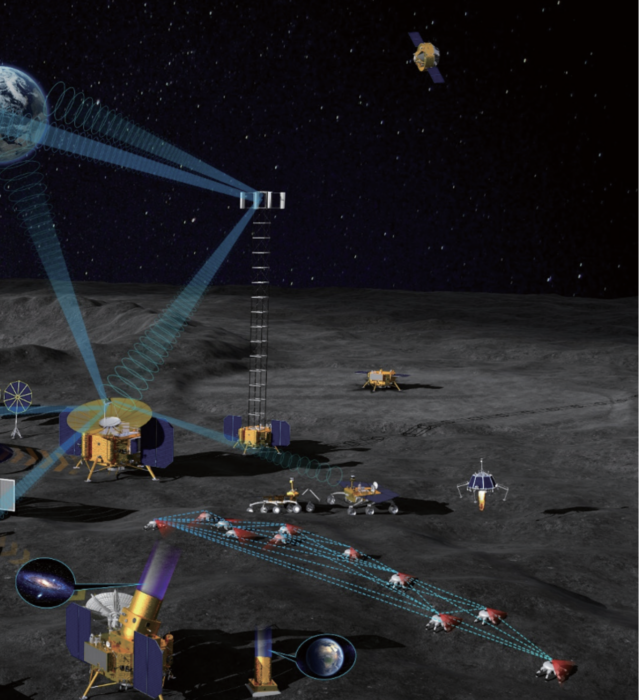
Russia’s recent downslope in space has much to do with its invasion of Ukraine in 2022. Russia was hit with sobering sanctions that hobbled its space program, as many of them prevent the country from obtaining materials for weapons, some of which are necessary to build spacecraft. Three coolant leaks of Russian ISS hardware (or spacecraft docked to it) within a year are likely symptoms of the issue. The war has also resulted in European company Arianespace halting its Soyuz launches out of its spaceport in Kourou, French Guiana. As for the ILRS, Russia is no longer described as a joint partner with China for the station following the invasion. China also neglected to mention Russia in presentations of plans for the base at the last two International Astronautical Congresses (IACs), though this does not necessarily mean Russia is no longer involved. Russia’s fading space capabilities are further exacerbated by a commercial US scene awash with newfangled technology. Russia’s program, which largely relies on older Soviet-era tech, failed to catch up, and now SpaceX sucks up any market share the Soyuz might have had left.
Europe
European space programs are somewhat of a tangled web, but the continent’s most prolific entity is the European Space Agency (ESA). Though lacking the political and financial might of its foreign counterparts, ESA has notched several wins; the establishment of the launch company Arianespace, the navigation and Earth observation satellite fleets Galileo and Copernicus, and the Euclid space telescope are some. ESA also frequently collaborates with NASA on projects such as the ISS and Artemis.
ESA is just one of many European space agencies. There is also the European Union Agency for the Space Programme (EUSPA) – ESA is a separate entity to the EU – and this agency operates the Galileo system as well as the European Geostationary Navigation Overlay Service (EGNOS). Then there are the European countries’ individual space agencies, such as the French Centre National D’Etudes Spatiales (CNES), or – depending on your definition of Europe – the UK Space Agency. Since many of these countries are a part of ESA, much of their agencies’ work involves contributing to ESA projects as well as Arianespace, the veteran spaceflight company around which the European launch sector is centered.
However, the delay of the Arianespace’s latest rocket, the Ariane 6, has left the continent high and dry, almost unable to access space on its own. As a result of this bind, ESA is shifting to a NASA-style method of commercial competition, funding, and procurement for its next generation of rocket, though the ever-increasingly subsidized Ariane 6 will have to make do for the time being – that is, if it ever flies.
| Country | Year of Joining | Membership Level |
| Austria | 1987 | Full Member |
| Belgium | 1960 | Full Member |
| Czech Republic | 2008 | Associate Member |
| Denmark | 1887 | Full Member |
| Estonia | 2015 | Associate Member |
| Finland | 1987 | Full Member |
| France | 1960 | Full Member |
| Germany | 1975 | Full Member |
| Greece | 2005 | Associate Member |
| Hungary | 2015 | Associate Member |
| Ireland | 2015 | Associate Member |
| Italy | 1987 | Full Member |
| Luxembourg | 2005 | Associate Member |
| The Netherlands | 1960 | Full Member |
| Norway | 1987 | Associate Member |
| Poland | 2012 | Associate Member |
| Portugal | 2000 | Associate Member |
| Romania | 2011 | Associate Member |
India
India’s space program is nothing if not ambitious. India’s space agency, Indian Space Research Organisation (ISRO), has already amassed a sizeable resume of space missions over its over 50-year history, including several lunar probes, a Mars orbiter, and a handful of space telescopes. In August 2023, the Indian space program made history by landing an unmanned craft near the moon’s south pole for the first time, which was also the country’s first successful lunar landing. ISRO also operates a fleet of rockets ranging from small- to medium- lift capacity, and markets these launchers through its commercial arm, New Space India Limited (NSIL), alongside satellite manufacturing services. ISRO’s rockets as well as its space missions are famously cheap and staggeringly efficient. Despite a comparatively low budget (6% that of NASA’s; 20% that of ESA’s), India’s space program has no trouble keeping up with or even surpassing its heftier peers.
India, however, has its eyes set on more. Another Mars orbiter and moon landing (together with Japanese agency JAXA) as well as a Venus mission are in the works. A human spaceflight program, Gaganyaan, is also taking its first steps, with a first crewed flight planned for 2026; this would make India the fourth country to independently send someone to space. In the meantime, NASA and ISRO are planning a joint mission to the ISS in 2024. Additionally, India has recently taken significant steps towards creating a private space industry to capture more of the global market.
Space Agencies’ Key Endeavors
| No. | Country | Launch | Human Spaceflight | Walked on Moon | Lunar Landings | Martian Missions | Interplanetary Human Missions (planned or proposed) |
| 1 | United States (NASA) | Yes | Yes | Yes | Yes | Yes | Yes |
| 2 | Russia (Roscosmos) | Yes | Yes | No | Yes | Yes | Yes |
| 3 | China (CNSA) | Yes | Yes | No | Yes | Yes | Yes |
| 4 | European Union (ESA) | Yes | No | No | No | Yes | Yes |
| 5 | India (ISRO) | Yes | No | No | Yes | Yes | Yes |
| 6 | Japan (JAXA) | Yes | Yes | No | No | Yes | Yes |
| 7 | United States (SpaceX) | Yes | Yes | No | No | No | Yes |
| 8 | China (CNSA) | Yes | Yes | No | Yes | Yes | Yes |
| 9 | United Kingdom (UKSA) | Yes | No | No | No | No | No |
| 10 | France (CNES) | No | No | No | No | No | No |
| 11 | Germany (DLR) | No | No | No | No | No | No |
| 12 | Canada (CSA) | No | No | No | No | No | No |
Opportunities and Challenges for Countries with Space Programs
Though spaceflight is a costly and fiddly endeavor, there are several good reasons for countries to pursue it. Firstly, there are the clear-cut, palpable benefits of space, such as having domestic satellites in orbit for communications and Earth observation without having to rely on a neighbor’s. As shown with the war in Ukraine, space has become a vital geopolitical tool, and having a space program can allow countries to leverage it for themselves. A space program also helps the country pursue cutting-edge technologies and science, as well as boost job growth. This can also serve as a source of national pride. In addition, partnerships with more capable space nations such as the US or China, who are more than willing to recruit support for their respective goals, can bolster a fledgling space program by providing launch services and expertise.
Then there are the business opportunities, brought about by the increasingly commercial space scene spearheaded by US companies. Creating a space program can help countries attract some of the roughly $450 billion global space market (possibly worth $1 trillion within a decade or two). In addition, cheap launches as well as lighter, smaller, and sometimes standardized satellites have made it easier for newcomers to enter the scene, giving way to new industries altogether. Some countries are taking note; Luxembourg, for example, has arranged its space program to make it attractive for space mining companies to set up shop.
All these opportunities come at a cost – usually to the tune of billions upon billions of dollars. This is a large challenge to establishing a successful space program, especially since many benefits of spaceflight are not readily apparent and therefore hard to politically justify. Lack of necessary funding has already caused casualties in the past; an early attempt to establish an Australian space agency, for example, sputtered and died due to insufficient resources. Even disregarding funding, there are still the people to consider. Without a longstanding history of spaceflight, newcoming countries will find it hard to gather personnel with expertise and experience in the field. Even with the world’s best engineers, spaceflight projects are prone to go awry once in a while, and an inexperienced work force does not exactly improve those odds. Therefore, developing a bona fide space program capable of functioning independently of larger programs or companies can be a near-impossible feat for newcomer nations, leading many to seek out a little help from their space superpower friends instead.
Conclusion
While the difficulties involved are significant, partnerships with more prolific nations and the availability of commercial services have made space more accessible than ever. However, as this apparent democratization evolves, the powers of international competition are nevertheless at play, shaping the future of exploration and the rules that dictate its evolvement.
One development is the formation of so-called space blocs, wherein ‘countries that shared interests on the ground began coming together to pursue specific mission objectives in space’ after the Cold War, explains Svetla Ben-Itzhak, Assistant Professor of Space and International Relations, Air University. This can serve both as a terrestrial soft-power tool as well as a way for more nations to get in on the space scene. Two of the biggest such blocs – the Artemis Accords and the ILRS group – are led by the world’s most advanced space programs, whose countries also happen to be rivals resulting in little collaborations in the sector.
While this arrangement can boost competition and allow more countries to access space, Ben-Itzhak warns that in the past, such ‘rigid alliances’ have often led to conflict, too. Even while still on Earth, there is already tension concerning the US’s Artemis Accords; for example, China has criticized them as a means to fashion space law around the US’s interests (while the US also regularly expresses suspicion of China’s potential lunar exploits). This predicament is made thornier by little-to-nonexistent cooperation between the nations in matters of space, as well as the increasing dominance of US private companies like SpaceX, whose interests might further complicate potential efforts to establish a (literally) universal set of rules. Despite the haziness of the situation, however, one thing is clear: space, by and large, remains a giant’s playground.
Featured image: Apollo 11 astronaut Buzz Aldrin on the Moon. Look for Neil Armstrong reflected in Aldrin’s visor. During the following three-and-a-half years, 10 astronauts followed in their footsteps. Credit: NASA
Share this article:
